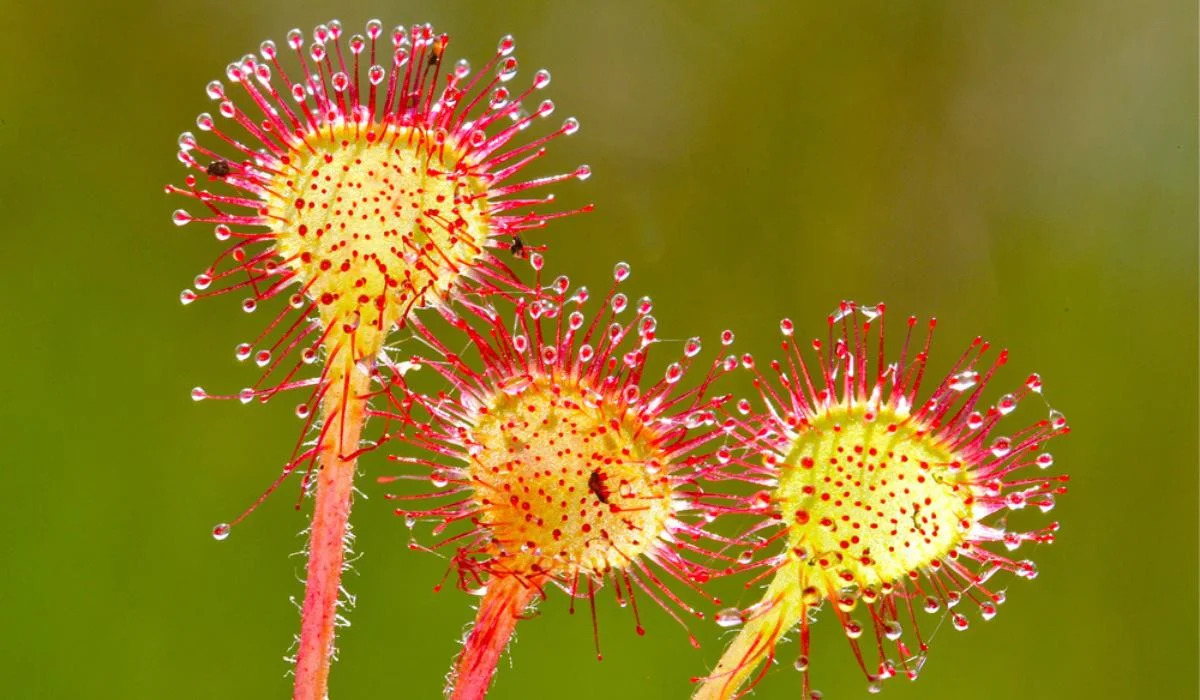
Do you think you know everything there is to know about plants? Think again! Get ready to be amazed by the fascinating world of the Sundew plant. Sundew, also known as Drosera, is a unique carnivorous plant that inhabits wet, boggy areas around the world. With its mesmerizing appearance and intriguing behavior, the Sundew has captured the attention of botanists and plant enthusiasts alike.
In this article, we will delve into the world of Sundew and explore some mind-boggling facts about this incredible plant. From its carnivorous nature to its remarkable adaptations, prepare to be astonished by the extraordinary abilities of the Sundew. Whether you’re a plant enthusiast looking to expand your knowledge or simply curious about the wonders of the natural world, these 12 unbelievable facts about Sundew will leave you in awe.
Key Takeaways:
- Sundew, a carnivorous plant with sticky tentacles, relies on insects for nutrients and can be grown as a houseplant, adding a unique touch to any indoor garden.
- Sundew’s colorful leaves, medicinal properties, and inspiring nature have captivated artists and writers, making it a fascinating subject in art and literature.
Sundew is a carnivorous plant.
The first astonishing fact about Sundew is that it is a carnivorous plant. Sundews belong to the Droseraceae family and are known for their ability to attract, capture, and digest insects. This unique adaptation allows them to thrive in nutrient-poor environments.
Sundews have sticky tentacles to catch their prey.
Sundews have specialized leaves covered in tiny, hair-like tentacles that secrete a sticky substance. When an insect lands on the leaf, it becomes trapped in the sticky secretion, and the plant slowly curls its tentacles to bring the prey closer to its digestive enzymes.
Sundews have a wide distribution.
Sundews can be found in various parts of the world, including North and South America, Europe, Africa, and Australia. They have adapted to different habitats such as bogs, wetlands, and sandy soils.
Sundews come in different species.
There are over 170 known species of Sundew, each with its own unique characteristics. Some popular species include Drosera capensis, Drosera spatulata, and Drosera intermedia.
Sundews have colorful and attractive leaves.
The leaves of Sundews are not only functional but also visually appealing. They can come in various colors, from vibrant green to shades of red, making them a beautiful addition to any plant collection.
Sundews rely on insects for nutrients.
Since Sundews grow in nutrient-poor environments, they have adapted to rely on insects for their nutritional needs. The plants extract essential nutrients from the insects they capture and digest.
Sundews can move.
Unlike many other plants, Sundews are capable of slight movement. The tentacles of the plant can slowly curl to bring the captured prey closer to the digestive glands, ensuring efficient digestion.
Sundews use sticky mucilage to digest insects.
The sticky substance that covers the tentacles of Sundews is called mucilage. This substance contains digestive enzymes that help break down the captured insects into a form that the plant can absorb.
Sundews have unique methods for pollination.
Sundews use several methods for pollination, including self-pollination and cross-pollination. Some species of Sundew have tiny hairs on their flowers that help capture pollen and aid in the pollination process.
Sundews can be grown as houseplants.
Many species of Sundew can be successfully grown as houseplants. With the right care and conditions, they can provide an interesting and unique addition to any indoor garden.
Sundews have medicinal properties.
Some species of Sundew, such as Drosera ramentacea, have been used in traditional medicine. They are believed to have anti-inflammatory and antimicrobial properties and have been used to treat various ailments.
Sundews have inspired works of art and literature.
The beauty and peculiar nature of Sundews have inspired artists and writers throughout history. They have been featured in botanical illustrations, paintings, and even literary works, adding to their allure and mystique.
Conclusion
In conclusion, the Sundew plant is truly remarkable and captivating. Its unique carnivorous nature, sticky tentacles, and ability to attract, capture, and digest insects make it a fascinating subject of study. The Sundew’s ability to thrive in nutrient-poor environments by supplementing its diet with insects is a remarkable example of adaptation in nature.
Whether you are a plant enthusiast or simply curious about the wonders of the natural world, exploring the Sundew plant will undoubtedly leave you in awe. Its extraordinary features and functions make it a true marvel of the plant kingdom.
FAQs
1. How does the Sundew plant catch its prey?
The Sundew plant catches its prey through specialized tentacles covered in sticky hairs. When an insect lands on the leaves, the hairs trap it, ensuring that it cannot escape. The plant then secretes digestive enzymes to break down the insect and extract the nutrients it needs.
2. Can Sundew plants be grown indoors?
Yes, Sundew plants can be successfully grown indoors. They require high humidity, bright light, and well-draining soil. It is recommended to use distilled water or rainwater to prevent the accumulation of minerals that could harm the plant. With proper care, Sundews can thrive as captivating houseplants.
3. Are Sundew plants dangerous to humans or pets?
No, Sundew plants are not dangerous to humans or pets. While they are carnivorous plants, their size and prey are typically insects. The sticky tentacles of Sundews are not capable of trapping larger animals or causing harm to humans or pets.
4. How do Sundew plants obtain nutrients from insects?
Once the Sundew plant has captured an insect, it secretes digestive enzymes to break down the prey. The enzymes aid in the breakdown of the insect’s tissues, allowing the plant to absorb the nutrients it needs for its growth and development.
5. Can Sundew plants be propagated?
Yes, Sundew plants can be propagated through various methods, including leaf cuttings or dividing the plant. Leaf cuttings involve carefully removing a healthy leaf from the plant and placing it on a moist growing medium. Division involves separating a clump of Sundews into individual plants. With the right conditions, both methods can result in successful propagation.
Sundews' captivating nature sparks curiosity about the incredible biodiversity surrounding us. These carnivorous plants share fascinating traits with other predatory flora, like Venus flytraps. Sundews also form intricate relationships with insectivorous creatures, such as Eastern pipistrelle bats, in their ecosystems. Exploring the interconnectedness of life reveals astonishing facts about our world's complexity and beauty. Uncover more mind-boggling truths about the web of life by diving into the wonders of biodiversity, the marvels of meat-eating plants, and the secrets of insect-eating animals. Nature's ingenuity knows no bounds, and every creature plays a vital role in the grand tapestry of existence.
Was this page helpful?
Our commitment to delivering trustworthy and engaging content is at the heart of what we do. Each fact on our site is contributed by real users like you, bringing a wealth of diverse insights and information. To ensure the highest standards of accuracy and reliability, our dedicated editors meticulously review each submission. This process guarantees that the facts we share are not only fascinating but also credible. Trust in our commitment to quality and authenticity as you explore and learn with us.


